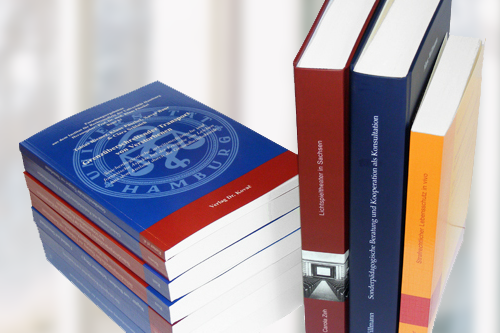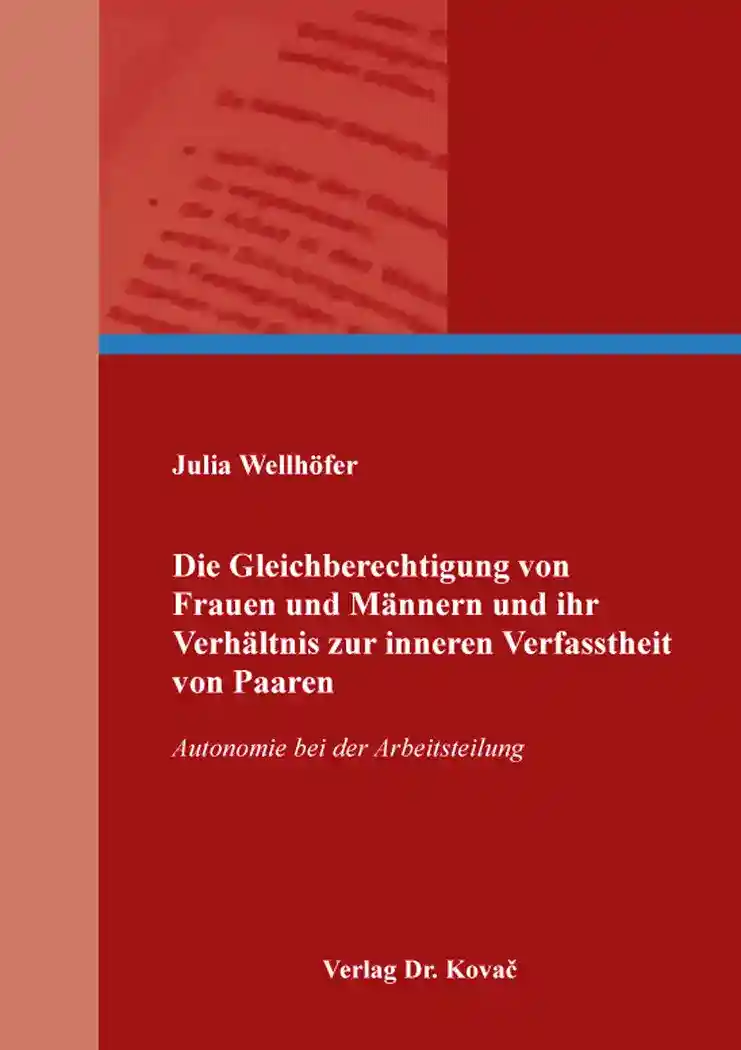Julia WellhöferDie Gleichberechtigung von Frauen und Männern und ihr Verhältnis zur inneren Verfasstheit von Paaren
Autonomie bei der Arbeitsteilung
Verfassungsrecht in Forschung und Praxis, volume 154
Hamburg 2022, 518 pages
ISBN 978-3-339-13024-2 (print) |ISBN 978-3-339-13025-9 (eBook)
About this book deutschenglish
For an autonomous and equal arrangement of the division of labor between married couples, the requirements of the German Constitution play a central role. The thesis analyses the relationship between the equal rights of women and men (Article 3 para. 2 GG) and the freedom of marriage (Article 6 para 2 GG). To this end, it examines how the social phenomenon of gender-specific division of labor is influenced by the normative effect of indirect guiding principles of law, sociological and politological factors, and attitudes of expectation. Findings on the formation of wills and autonomy in structural conflict situations are combined with a constitutional comparison of existing figures of argumentation in the jurisprudential and social discourse on the division of labor. The results of the analysis are specified by provisions of constitutional requirements that apply in particular to typifications in legislation in the context of the gender-specific division of labor.
It is shown that the underlying negotiation paradigm of the division of labor does not correspond to reality: instead of a classical negotiation situation, couples are typified by an unwritten couple constitution, shaped by role models, gender expectations and incentives for retraditionalization. This shaping of gender relations at the individual and societal level is influenced by state factors in the form of income tax law, social security law, alimony law and labor law, which affect women and men differently. These influences have an impact on structural conflicts in the division of labor, between supposedly separate spheres of public and private. The autonomy of married couples in their division of labor extends differently for women and men.
A critical examination of the thesis of "actually existing neutrality" for matrimonial design freedom reveals that ostensible neutrality masks structurally persisting inequality. The contradictions of the assumption of "forced-voluntary" decisions in relation to marital autonomy are exposed. The existing asymmetries in gender relations are reinforced by the interference of the state with apparent alternatives and, at the same time, intensive normative and economic control by law.
The fundamental right to freedom of marriage does not provide a model for a particular type of marriage, but rather opposes the privileging of traditional roles. In defining this fundamental right to freedom in more detail, the state is obligated to both spouses - as a couple and as individuals - to correspond to the interactionist character of freedom of marriage in the multipolar relationship between the spouses and the state. The state is also obliged to ensure equality in gender relations through the law, including in the sphere of marriage. From this follow specifications for the state in ist position as a central actor in enabling autonomy in the division of labor in the gender relationship. As a specification, a concept of material equality is developed for the fundamental right to equality of women and men, whose structural perspective functions as a tool of analysis and as a basic principle. This results in the methodological possibility and actual obligation of all three state powers to perceive gender-specific relevant matters as such, to examine potentially different effects on women and men in - supposedly gender-neutral - areas of regulation and to counteract existing asymmetries.
Keywords
ArbeitsteilungAutonomieBundesverfassungsgerichtDiskriminierungEhefreiheitGeschlechtGleichberechtigungGrundrechteInterdiszplinäre ForschungNormativitätRechtssoziologieTypisierungVerfassungsrechtIhr Werk im Verlag Dr. Kovač

Möchten Sie Ihre wissenschaftliche Arbeit publizieren? Erfahren Sie mehr über unsere günstigen Konditionen und unseren Service für Autorinnen und Autoren.
